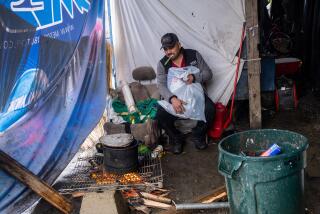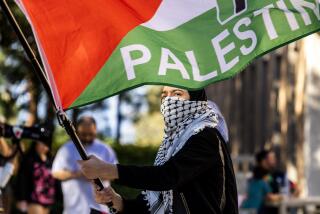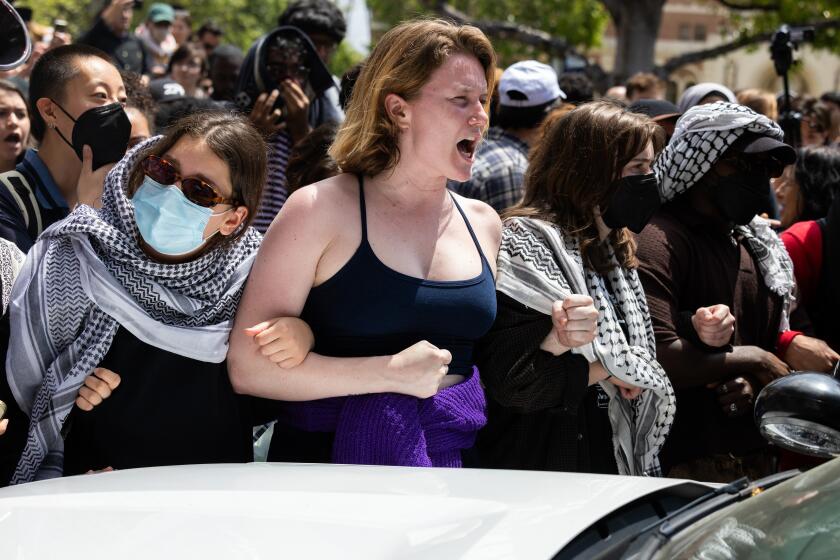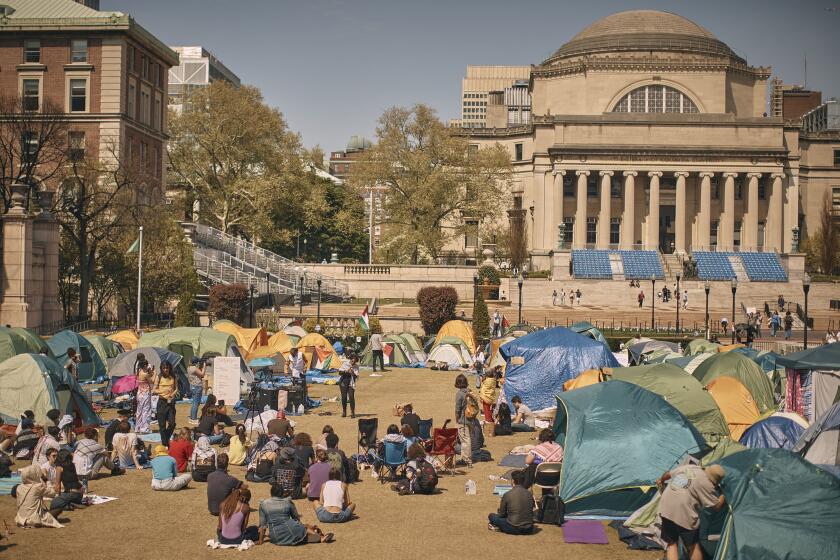HIGH LIFE : Reading, ‘Riting, ‘Rithmetic . . . and Relations : Ethnic Advisory Forum Creates Harmonious Environment at Irvine High School
With minority enrollments in Orange County high schools on the increase each year, educators are beginning to add to their curricula the fourth “R”--relations, more specifically, inter-ethnic relations.
“Orange County is becoming growingly diverse,” said Rusty Kennedy, executive director of the Orange County Human Relations Commission, which was organized by the Orange County Board of Supervisors to help curb racism, prejudices and biases around the county.
“More and more teachers and students are facing the ‘big world’ problems like drugs and ethnic-related gangs,” Kennedy said. “I think that there is a real value for learning about other cultures in standard curriculum, regardless if the school even has problems.”
There has been a 10% increase in minority enrollment over the last eight years in county high schools, according to the California Basic Educational Systems report for the 1987-88 school year. The report also states there is a 39% minority population enrolled in high schools countywide.
With this different form of “growing pains,” educators have increasingly turned to improved communications for dealing with strained ethnic relations.
This year marks the eighth anniversary of Irvine High School’s Ethnic Advisory Forum, which was formed to create a positive environment for students of all ethnic backgrounds. The group was formed in 1981 by Bruce Baron, a social science teacher at the school, when teachers, parents and students saw ethnic relations becoming strained on the 3-year-old campus.
“People tend to feel very isolated, very alone, and I think it is important to break down those feelings of isolation so that you know there is someone on campus to talk to,” Baron said. “Many times the society at large does not encourage communication with ethnic groups. One of our roles at the school is to educate people to communicate. We teach about inter-ethnic relations not because we have great faults, but because building understanding has lifelong benefits.”
Members of the Ethnic Advisory Forum meet one evening each month to plan classroom presentations on ethnicity. At these meetings, Baron also prompts open discussions of ethnic issues, which often strike close to home for many members. This, according to Baron, is the most crucial aspect of the group. Students actively tackle ethnic stereotypes, biases, personal experiences and problems through dialogue.
“The meetings we have are very emotional sometimes when we touch on personal issues,” said senior Sharon Yim, a three-year member of the group. “It is always a good-will energy that comes from these meetings because the people in (the meeting) wish to help understand one another.”
According to Baron, the group grows through a ripple effect. As the group has picked up momentum over the years, others have joined and passed on what they have learned to their friends. The group has grown from 10 to 90 students.
At the meetings, students get a firsthand look at the dynamics of inter-ethnic relationships in a way they may never have experienced before.
“You have people from all walks of life getting together, making it the most representative student group on campus,” Baron said. “People from one group tend to stereotype someone from another. Through a ripple effect in the meetings, friendships are made and stereotypes are broken down.”
In an effort to open dialogues and promote ethnic awareness with students outside the group, the Ethnic Advisory Forum sends student representatives to address multicultural issues in history and English classes at the school.
One important aspect of the group is its yearly explanation to new students of the significance of the school’s 47-foot mural titled “Man’s Inhumanity to Man.”
The mural, created by 17 Irvine High students--including whites, blacks, Asians and Latinos--was begun in November, 1980, and first hung in February, 1982. The mural’s side panels display scenes of violence. In the center panel, people of all ethnic backgrounds come together and hold hands. After much controversy and debate over its hanging, the mural gained a permanent home in the school’s library-media center in June, 1982.
“When I first learned about the different meanings of the mural, it brought more of an awareness to racial tensions (of the past),” said junior Eunjoo Lee, a three-year member of the group. “There is so much culture at Irvine that we should expose everyone around us to it. The mural really has the ability to demonstrate and provoke thought.”
Another role of the Ethnic Advisory Forum is the production of videotapes that feature teen-agers of different ethnic backgrounds discussing issues facing students today. The videotapes are then shown to other students, who get an opportunity to discuss the ideas presented. Baron believes this is a key to the group’s purpose: having students work with other students to get the message out.
In one videotape made three years ago, a group of students participate in a “name game,” in which ethnic slurs are written on different pieces of paper, which are then taped to the students’ backs. Not knowing what they have been labeled, students then interact with others, treating them according to their respective slur. The students learned what it is like to be labeled with an ethnic stereotype.
“When I first saw the videotapes, it really affected the way I view other races,” said senior Matt Kocher, a two-year member of the group. “It made me really sensitive to the feelings of other groups and showed me that others really cared about this.
“The funny thing about prejudice is that it will lie dormant, but will surface as an almost subconscious problem. We have to keep working at it and show through presentations that we can’t solve problems, but we can discuss them.”
Since there is no known way to completely stop racism, Baron said, he instructs his students to simply open up conversations rather than preach to their peers.
“Ethnic problems are not a worked-out thing, it’s a working process,” said senior Monica Garcia, a first-year member of the group. “We will never get to the point where you say, ‘The work is done.’ Our whole purpose is not to give answers, but to get people to talk.”
A goal from the onset of the program has been to involve ethnic minorities in school activities. What troubled school officials in 1981 was the lopsided under-representation of minority students in clubs, the yearbook and newspaper activities, and student government. The Ethnic Advisory Forum was formed to help bring these discrepancies into the open through discussion.
Michele Patronite, student body president at Irvine, said ethnicity is not considered a barrier to participating in student activities any longer.
“The campus is much more open to minorities,” Patronite said. “It is accepted now that ethnic students enter elections, and when they lose, ethnicity is not a barrier. Race does not exclude anyone from getting spots anymore.”
According to Principal Gary Norton, the Ethnic Advisory Forum has been a key building block in the school’s multicultural program by helping students recognize and respect one another’s ethnicity.
“The entire program is crucial to inter-ethnic relations at our school,” Norton said. “It plays a very important role and even serves as a pilot program to others on how to get along with one another. It has brought together students on the campus from all walks of life, bringing a cultural awareness so that others are conscious that we are all human beings.”
The county’s Human Relations Commission, following Irvine High’s lead, has begun a program titled Living-Room Dialogue. The commission will make presentations of ethnic-related issues at high schools in hopes of sparking discussions among teen-agers.
“High school is usually indicative to what type of society will turn out tomorrow,” Baron said. “We are surrounded by inter-ethnic problems. If we can deal with stereotypes, biases and inter-ethnic relations now, we can avoid problems in the future.”
More to Read
Start your day right
Sign up for Essential California for news, features and recommendations from the L.A. Times and beyond in your inbox six days a week.
You may occasionally receive promotional content from the Los Angeles Times.






